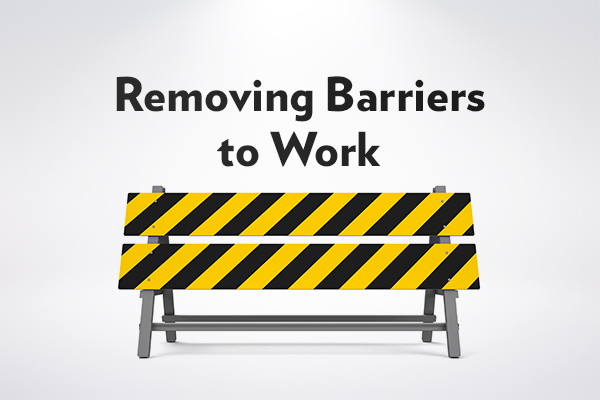Nearly half of all government spending in Pennsylvania goes to human services or welfare, and last week Governor Wolf proposed $40 million in additional welfare spending for the 2020 state budget. That’s on top of more money for growing enrollment in these programs and this year’s $492 million cost overruns. In total, the administration wants to increase human service spending by $1.4 billion.
But how well are these programs working? Are more Pennsylvanians escaping poverty?
The Independent Fiscal Office’s (IFO) performance-based review of Medicaid, SNAP (food stamps), and TANF (cash welfare) attempts to assess these programs and offer a scientific and ideologically neutral conclusion.1 Unfortunately, the analysis does not show how the Department of Human Services (DHS) is achieving its mission to promote opportunities for independence while demonstrating accountability for taxpayer. In fact, there are indications that DHS is failing to both counts.
Independence Secondary in TANF
Federal rules require TANF (Temporary Assistance for Needy Families) to track meaningful outcomes, such as work participation rates, cases closed due to employment, and how many individuals return to the program within a year.
The latest data reports from DHS show just 21.6% of individuals enrolled in TANF, or cash assistance, are working as of October. There is clearly room for improvement.
Of all the adults using TANF in Pennsylvania, nearly 16% are utilizing extended-TANF. On average, just 2% of TANF families in other states are using extended benefits.2 This part of the TANF program serves individuals who have exceeded the 5-year lifetime limit on cash benefits. The individuals receive a “hardship waiver” qualifying them for ongoing cash assistance.
Rep. Kerry Benninghoff has introduced House Bill 426 to end extensions and reduce the lifetime limit to four years. This could refocus the program on finding family-sustaining employment.
In addition to strengthening time limits, lawmakers could also consider ways to extend ineligible periods for those who do not comply with the work requirement. In Kansas, these reforms helped families more than double their income in the first year after leaving the program, and reduced enrollment between 2011 and 2017 by 78%. Those are real results.
Lack of Accountability in Medicaid
While it is the largest program in the budget, Medicaid is short on accountability. Let’s take the $338 million spent verifying Medicaid applications as an example. Ensuring eligible Pennsylvanians receive Medicaid is pivotal.
The IFO notes a high 98% accuracy rate in determining non-long-term care individuals who are eligible for Medicaid. However, the federal government—which has a stronger incentive to ensure accuracy since it pays most of the bill—stopped auditing state Medicaid eligibility assessments in 2014 when Medicaid expanded under the Affordable Care Act. It’s concerning our largest state welfare program has been operating for six years with no federal verification of eligibility decisions.
Thankfully, that’s changing. Pennsylvania is among 17 other states in the second round of federal Medicaid eligibility audits. In a report of the first round of state audits, the Center for Medicare and Medicaid Services notes:
[H]igh levels of observed eligibility errors…[due to] maintaining insufficient documentation to substantiate that income and other information was appropriately verified, failures to conduct timely and appropriate annual redeterminations, and claiming beneficiaries under incorrect eligibility categories that provide a higher federal matching rate than was appropriate.
In short, the federal government found 14.9% of payments were made to non-eligible recipients, totaling $57.36 billion. It’s no wonder federal administrators are now pursuing rule changes to increase transparency and integrity across the country.
Apart from eligibility errors, Attorney General Josh Shapiro recently estimated nearly $3 billion is spent in phony Medicaid provider claims each year. That’s more than we spend on state prisons.
How to Track Welfare Performance
The IFO notes the importance of an integrated workforce system, suggesting a closer relationship between DHS and the Department of Labor and Industry to facilitate tracking TANF and employment training outcomes. This type of integration should also exist for SNAP and Medicaid to inform the best ways to promote opportunity.
Considering the vulnerabilities of the people who receive benefits and the sheer size of the budgets involved, these programs need meaningful performance tracking.
The existing performance measures fail to tell lawmakers and taxpayers whether our $40 billion safety net is working. Is it helping people move towards independence and earned success or keeping people trapped in a cycle of dependence? That’s what Pennsylvanians need to know.
1. Independent Fiscal Office, “Performance-Based Budget: Department of Human Services,” http://www.ifo.state.pa.us/download.cfm?file=Resources/Documents/PBB_2020_DHS_REPORT.pdf.
2. Percent of TANF Families that Received Assistance for more than 60 countable months Due to Hardship or DV Waiver, US Department of Health and Human Services, Fiscal Year 2018, https://www.acf.hhs.gov/sites/default/files/ofa/timelim_2018_web_508_compliant.pdf.
RELATED : JOBS & ECONOMY, WELFARE, MEDICAID, PENNSYLVANIA STATE BUDGET





